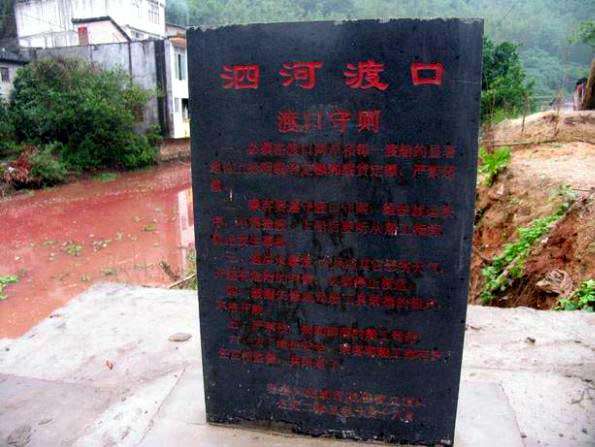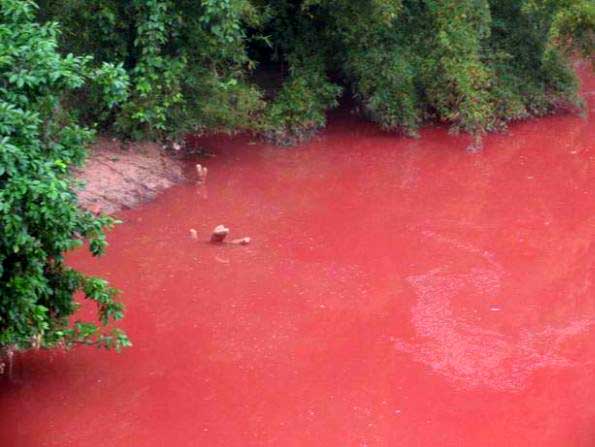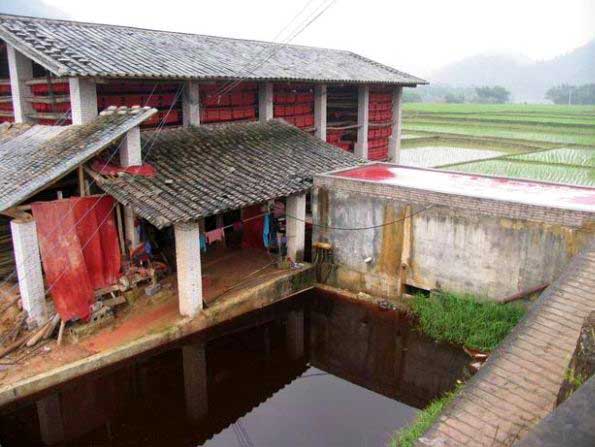The River Flows Like Blood
There are many massacres in the history of China. The more contemporary standard is the Nanjing massacre, of which it is said that as many as 300,000 Chinese were killed by Japanese soldiers. There were probably much worse massacres in older times. Other famous massacres are 嘉定三屠 (The Three Massacres of Jiading, because the Manchurians were not satisfied with one massacre of that city and went back a couple more times to make sure that the job was completed) and 揚州十日 (The Ten Days of Yangzhou, which was the total time allowed for the Manchurian soldiers to do as they please with the citizenry). This is not to forget that the one million population of Baghdad was massacred by the Mongolians on their western campaign.
The gold adjectival standard for massacre in the Chinese language is the phrase 血流成河, translated as "The Blood Flowed Like A River." In the following, there are photographs (from Boxun) of a river that flows like blood. The location is in RongXian, Guangxi province, China.





How did this ever come to pass like this? According to incomplete statistics, in Rongxian (Guangxi province), there are more than 170 factories involved in paper dyes along the Xiujiang river with more than 3,000 employees. The total economic output was 80 million yuan, with more than 3 million yuan paid in taxes. This is the economic backbone of a county that is classified as "impoverished" in the national ranking system. This industry also has multiplier effect on the rest of the local economy through transportation, food, service, etc. If this industry is shut down, the town economy would be devastated.



So maybe the blood did not flow like a river and nobody died there. But how many people will eventually die from pollution-related causes along the river?